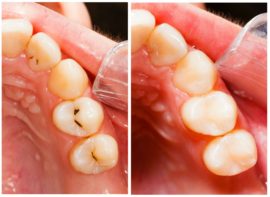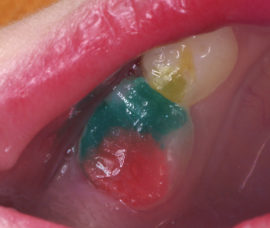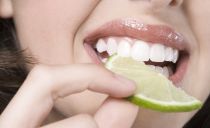Who is a dentist and what does he treat?
The initial treatment for dental diseases begins with an examination conducted by a dentist. It is such a specialist that needs to be contacted about problems with toothache or gum disease. Any diseases found in the oral cavity require the consultation of a dentist and further therapeutic treatment.
Content
What is included in the tasks of the dentist
For those who do not know what the dentist-therapist does, it should be emphasized that it is with this specialist that virtually any treatment or examination of the teeth and oral cavity begins. The dentist is engaged in:
- elimination of the consequences of caries, blocking the development of the disease;
- filling, building, restoration of teeth;
- preventive examinations to detect problems in the oral cavity at the initial stage;
- diagnosis, prescribing medical treatment.
In the presence of inflammation of the mucous membrane, the problem is obvious, but if the tooth hurts, then an additional examination may be required. In situations with diseased teeth, a specialist usually deals with treatment only after setting and confirming the diagnosis, because otherwise medicines can lead to a worsening of the situation.
Bad breath will not necessarily be associated with problems in the mouth, and sometimes you may need to examine not only the oral cavity and jaw, but also other organs, including the liver and stomach.
The dentist may prescribe a radiography or visiography of the jaw / tooth. It is necessary to take pictures using an X-ray machine in a separate room, and only a specialist with the appropriate qualifications can work with such equipment.
Manipulation in the therapist's office
A sick tooth that cannot be cured has to be removed, and then you will need to contact a surgical room. But if there is an opportunity to restore the chewing ability of a tooth and relieve a person of pain, and keep the root in the gums, then a therapeutic specialist can do a number of manipulations:
- remove the dental nerve;
- root canal treatment and restoration;
- drilling tooth decayed caries;
- filling the disinfected cavity with filling material.
The dentist-therapist can put the filling without anesthesia, but for the removal of the dental nerve, modern dentistry involves the use of painkillers. For manipulations you will need a dental instrument of the appropriate type and quality.
The modern clinic has all the necessary tools. Special equipment today makes the treatment in the doctor’s office painless. But the dentist must have the proper experience and good preparation to ensure painlessness for the patient.
The tasks of such a doctor include not only diagnosing and installing seals. The doctor may prescribe a treatment course aimed at therapy in the treatment of periodontitis, stomatitis and other diseases or infections.
What diseases heals
Consulting assistance of specialists of this profile is required in almost any situation when there are any problems with teeth and jaw.However, there are a number of diseases that are treated exclusively in the department of dentistry, since they do not require surgical or orthodontic intervention. Among these diseases, the most popular should be distinguished:
- Caries. A familiar problem that is characterized by the permanent destruction of dental tissue by dangerous bacteria. It often proceeds without pain, but has dangerous consequences and side effects.
- Pulpitis. It consists in inflammation of the dental nerve, and develops against the background of the effects of caries infection on soft tissues. It is characterized by aching severe pain, increasing when pressed. Sometimes the first stages go without symptoms.
- Periodontitis. Destruction of soft tissues between a human tooth and alveolar bone. There is a traumatic option and the consequences of caries: in this case, treatment usually takes a long period.
- Periostitis. He is a classic flux. Inflammation of the soft tissue of the periosteal region. Often occurs with the wrong choice of medications in the treatment of pulpitis or periodontitis. Pus is removed, sometimes this leads to tooth extraction.
Children's dentistry
The dentist in the children's office sets himself the task of helping the child's body to form the correct bite and a healthy, beautiful smile. In many cases, milk teeth that hurt, experts see no reason to treat, and then surgery comes to the rescue.
If you restore the tooth decayed by caries really, then you can use the classic technology of filling. Milk teeth will soon fall out themselves, and there is no point in creating durable dentures, however, temporary filling of milk teeth allows you to restore chewing function for the next few years until permanent germination.
To work with children in Moscow, colored filling material is often used, which will be very interesting for kids. Bright colors, with which you can put seals, are safe for health, will not hurt and cheer up a child!
If the child is afraid to be treated, it is permissible to use nitrous oxide or even general anesthesia for difficult situations. This will help to make the process simpler and more convenient, and also beneficially affect the psychological state of the baby.
Teens may need help in the process of tooth growth to create an even dentition. The dentist does not undertake the alignment of the teeth, and can only refer the patient for further observation and procedures at the orthodontist. However, in the process of alignment and wearing of bracket systems, it is still necessary to regularly observe and consult with a specialist in the treatment room.
What may be required additionally
To correctly determine the diagnosis, the patient can be assigned various additional procedures, studies and analyzes:
- smear of the oral mucosa on bacteria and fungi;
- radiography on modern digital equipment;
- microscopy;
- electroodontodiagnosis for assessing the condition of the pulp (nerve).
During the examination, the doctor can use tools that will allow you to open the crowns and examine the condition of the tissues inside the tooth and the condition of the nerves inside the root.
Preventative measures
For oral health, it is necessary, first of all, to carry out regular prophylaxis of caries manifestations. This consists in high-quality cleaning of teeth with paste, floss and other means. A proper diet and ongoing medical advice / examinations are needed.
Some cases of caries can develop without symptoms, and they can only be determined with certain examinations. This allows you to stop the development of a destructive disease and postpone the removal and drilling of infected tissues for some time!
How much are therapeutic services
You need to know not only what the dentist does, but also how much his work costs. And there are some difficulties. If the surgeon can tell you exactly how much it costs to pull out a tooth or operate on a gum, then the dentist will not be able to accurately tell the price without inspection. This is because in order to cure teeth and gums, you must first be examined and determine the degree of the disease.
If the gum has severe inflammation, then the treatment takes a long time, and the cost increases accordingly. Considering what the dentist-therapist does, it is necessary to carry out the necessary control over the condition of the jaw and oral cavity, and regular prophylaxis, which will be cheap, will help to postpone the need for serious treatment for a long time.
There is no definite answer to the question of which dentist treats teeth, since complex work of various specialists may be required. A dentist is just the first doctor to visit if there is pain and a problem in the oral cavity, as well as an unpleasant odor.
The actual question today is the dentist-therapist who is it and what heals. In fact, this is the main doctor of the dental clinic, who makes decisions about further treatment, and also gives directions for removal or additional research procedures. Without this person, simply no treatment for a dental disease can do!







